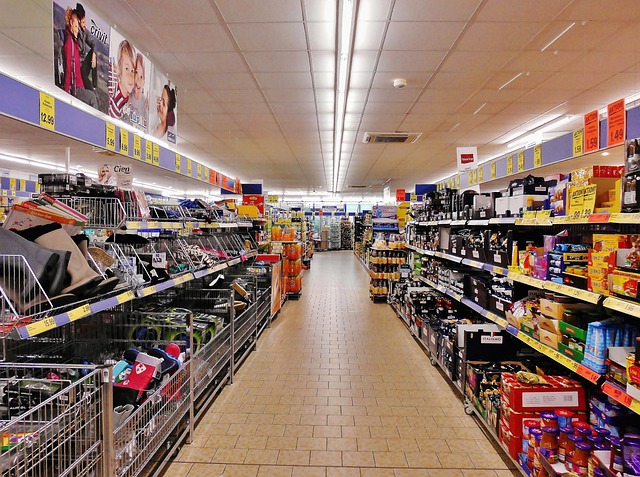UK pEPR: Who, What, When, Where and Why?
by Ana Pilcher May at 10:01 in Packaging, Emerging, Environmental
The UK's new Packaging Extended Producer Responsibility (pEPR) system is transforming how businesses that manufacture, import, or sell packaging and packaged products are held accountable for the waste they generate. With 2024 bringing a whirlwind of updates and more expected in 2025, many companies feel overwhelmed by the definitions, terminology, and deadlines.
This blog breaks down:
- Who is obligated
- What the requirements are
- When key deadlines and changes occur
- Where the regulations apply
- Why compliance matters
Whether you're a company navigating the UK's complex compliance landscape or simply interested in the future of packaging waste management, this guide will help you understand the UK's evolving approach to pEPR.

Who is Obligated?
Your business' size determines its obligations under pEPR regulations.

Categories of Producers:
- Micro Businesses: Handle less than 25 tonnes of packaging or have a turnover under £1m. No obligations but tracking packaging volume is crucial to ensure compliance if thresholds are exceeded.
- Small Producers: Handle 25-50 tonnes of packaging with a turnover above £1m OR handle over 50 tonnes with a turnover between £1-£2m. They must report data but are not financially responsible for the waste generated.
- Large Producers: Handle more than 50 tonnes and have a turnover over £2m. They must report data and pay for packaging waste management.
Producers can include brand owners, importers, distributors, online marketplace operators, and service providers supplying reusable packaging. In complex supply chains, determining responsibility can be challenging.
What is pEPR?
pEPR builds upon earlier packaging regulations from 1997 and 2007, requiring businesses to take financial and data-reporting responsibility for the packaging they place on the UK market. Under the previous system, responsibility was shared between different types of producers, with each being financially responsible for a certain percentage of the packaging waste. Now a single producer (often the brand owner) will be wholly obligated for all the packaging associated with a product. Packaging is split into different categories for reporting purposes.
Packaging Categories:
- Primary: Directly in contact with the product
- Secondary: Groups products together
- Tertiary: Transport or bulk packaging
- Shipment: E-commerce packaging for delivery to the consumer
Packaging is also categorised as household or non-household based on its use and likely end-of-life destination.
What Do I Have to Do?
Small Producers must:
- Report data on packaging materials and weights annually.
Large Producers must:
- Report data on packaging materials and weights bi-annually.
- Meet recycling obligations for household, non-household, and Deposit Return Scheme (DRS) packaging by purchasing P[E]RNs (Packaging [export] Recovery Notes).
- Pay EPR fees for household packaging.
- Complete and report RAM (Recyclability Assessment Methodology) results for household packaging placed on the market in 2025.
PRNs were introduced in 1997, and large producers (or their compliance schemes) must purchase enough PRNs to meet mandatory recycling targets. PRN prices fluctuate due to market dynamics. In the new system, PRN costs must be paid in addition to EPR fees for household packaging.
EPR Fees (also known as waste disposal fees) are new additional charges per tonne of household packaging material placed on the market, paid to PackUK (the new pEPR Scheme Administrator), which distributes the funds to local authorities.
Since both household and non-household packaging require PRNs but only household packaging incurs EPR fees, distinguishing between them is crucial.
Need help assessing your packaging, RAM assessments, or managing data reporting? Contact us!
When Are the Key Deadlines?
- January 2025 – The Producer Responsibility Obligations (Packaging and Packaging Waste) Regulations 2024 took effect.
- 1 April 2025 – Deadline for annual 2024 (small producer) and H2 (July-Dec 2024) data submission (large producer).
- July 2025 – Final EPR fees for each tonne of material expected.
- October 2025 – Large producers receive their first EPR fee invoices for 2024; and H1 (Jan-June 2025) data submission and RAM assessments due for large producers.
- 2026 – Eco-modulated fees based on recyclability assessments take effect.
- December 2026 - Nation of sale data submission due for certain small and large producers.
Where Does pEPR Apply?
pEPR regulations apply across England, Scotland, Wales, and Northern Ireland. Non-UK companies with a physical UK presence are obligated, while online marketplaces take on obligations for businesses without a UK presence.
Why Should You Care?
Ignoring pEPR obligations can lead to significant consequences:
- Fines & Penalties: The Environment Agency (and the other nation's equivalent agencies) can issue compliance notices, enforcement actions, and fixed and variable monetary penalties of up to 5% of annual business turnover.
- Competitor Reporting: Defra encourages producers to check the National Packaging Waste Database and report their non-compliant competitors.
Beyond compliance, EPR also provides environmental benefits:
- Helps fund improvements to recycling infrastructure, resulting in improved recycling rates.
- Encourages businesses to rethink their packaging strategies, reducing waste and promoting eco-friendly materials.
- Encourages the optimisation of packaging use, leading to cost savings, and streamlined logistics.
Need Help Navigating pEPR?
Understanding and complying with UK pEPR regulations can be complex. If you have questions about packaging classifications, RAM assessments, or data collection and reporting, contact us today.
We're here to help!
 Click here to receive regular updates on blog posts, webinars, and regulatory changes directly to your inbox
Click here to receive regular updates on blog posts, webinars, and regulatory changes directly to your inbox

